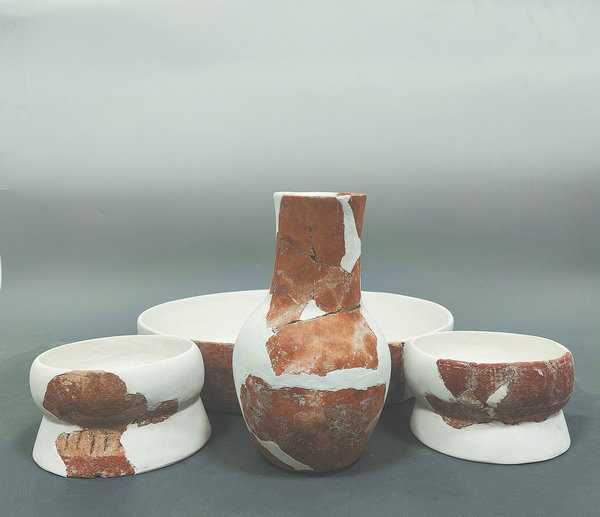

He points out the layout of two platforms — if they are analyzed to be of the same time, they may offer clues for a very elaborate society.
"The two platforms, or two settlements, are separated by a moat. They possibly belonged to two different groups of people living together," Zhang Chi says.
Similar phenomenon had been discovered at the Baiyinchanghan Site of the Xinglongwa Culture, a Neolithic culture dating back 8,200 to 7,200 years in today's Inner Mongolia autonomous region and Northeast China, he adds.
He says the Baiyinchanghan Site in Chifeng, Inner Mongolia, also unveiled two settlements separated by moats, very close to each other. And the Huangchaodun Site is more than 1,000 years earlier than that.
Zhang Chi urges more studies on the identification of the rice field and reasons why it can still be preserved to this day.
"We generally believe it's hard for a rice field to be preserved for several thousand years. Only under very special conditions, could the field have continued to be utilized by people of later generations. We still need further studies to confirm if it was really a rice field," he says.